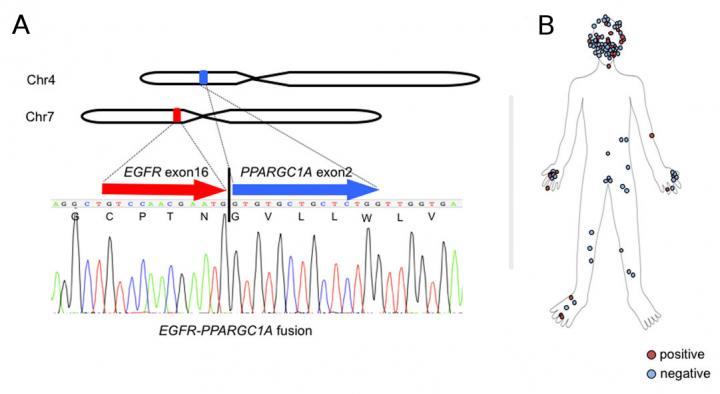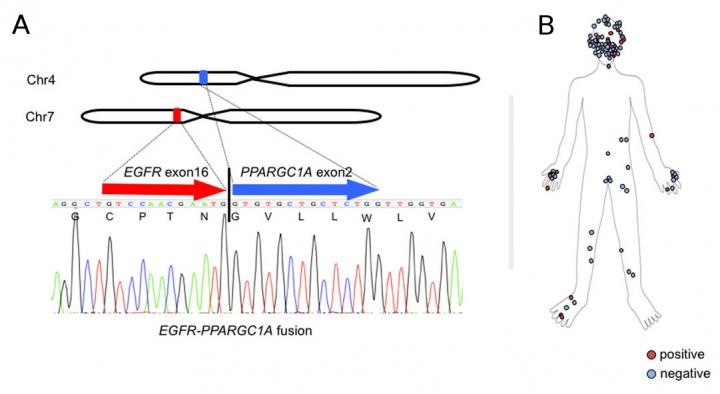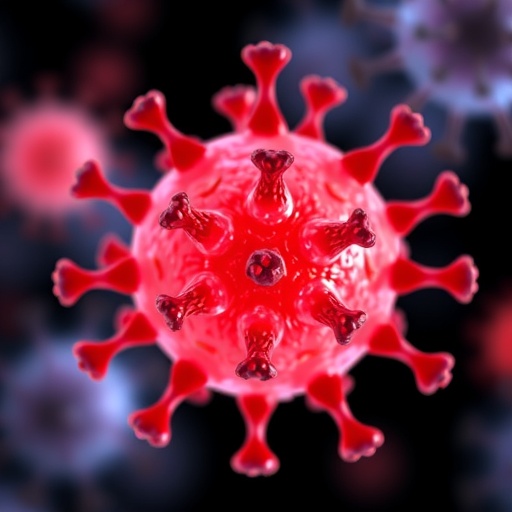
Credit: Dr. Masatoshi Jinnin
A fusion gene is a single composite gene that is the result of the combination of two formerly independent genes. Researchers from Kumamoto University , Japan have determined that a particular fusion gene has a tendency to be found in cutaneous squamous cell carcinoma (cSCC) lesions on skin exposed frequently to the sun.
Many cSCCs are easily treated by simple removal, but if left untreated they can become deadly. Current detection methods can be slow, particularly for abnormal cases, and some cSCCs are resistant to standard treatments emphasizing the need for improved diagnostics and therapies.
Fusion genes may be found in various types of connective tissue tumors, and some treatments have been developed that inhibit the tumor-forming actions of those genes. However, no fusion gene had been identified for cSCC before the Kumamoto University research team began their search. The researchers started with the cell lines A431 and DJM-1, which are frequently used in SCC studies, and normal human epidermal keratinocytes (NHEKs) as a control. Using transcriptome sequencing, they found a fusion between exon16 of epidermal growth factor receptor (EGFR) and exon2 of PPARγ coactivator 1-α (PPARGC1A) in the A431 cell line but not in the normal skin samples or other tumor tissues.
In samples of human tumor tissues, the fusion gene EGFR-PPARGC1A was found in areas frequently exposed to the sun, like the face or hands, but not in areas of the body that are typically concealed in the daylight. Furthermore, fusion genes typically found in other types of SCCs were rarely found in cSCC. The researchers believe that this is because of cSCC's interrelationship with sun exposure, and that EGFR-PPARGC1A may play a part in cancers caused by ultraviolet irradiation.
"We still have more work to do to determine this fusion gene's role in cSCC tumorigenesis, but our work should provide some insights into new drug development for this type of cancer," said project scientist, Dr. Sho Egashira. "It may be possible, for example, to assess the fusion genes in a cancerous lesion and apply a customized therapy based on the results. This would greatly reduce the risk of any side effects of the treatment."
###
This research was published online in the journal Scientific Reports on 04 Oct. 2017.
[Source]
Egashira, S., Jinnin, M., Ajino, M., Shimozono, N., Okamoto, S., Tasaki, Y., … Ihn, H. (2017). Chronic sun exposure-related fusion oncogenes EGFR-PPARGC1A in cutaneous squamous cell carcinoma. Scientific Reports, 7(1). doi:10.1038/s41598-017-12836-z
Media Contact
J. Sanderson
[email protected]
http://ewww.kumamoto-u.ac.jp/en/news/
Original Source
https://www.nature.com/articles/s41598-017-12836-z http://dx.doi.org/10.1038/s41598-017-12836-z





